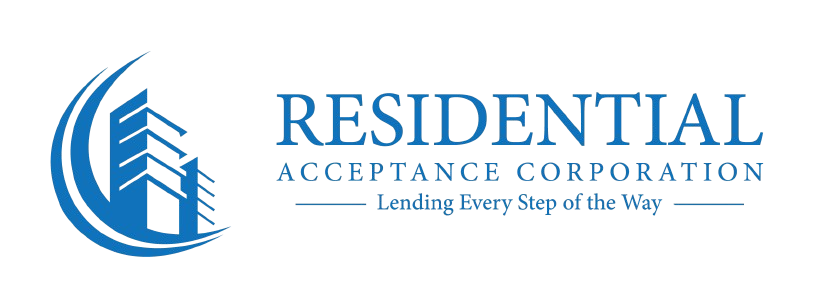Navigating the path to homeownership in Tampa can feel complex, but a smooth mortgage approval starts with one thing: preparation. A disorganized application often leads to delays, frustration, and even denial. That's why we've created the definitive mortgage loan application checklist for 2025, specifically designed to streamline the process for aspiring Tampa homeowners and refinancers. By gathering the essential documents and information upfront, you position yourself for a faster, more confident journey to the closing table.
At Residential Acceptance Corporation (RAC Mortgage), we've seen how a well-prepared application can transform the home-buying experience here in Tampa, often shortening closing times significantly. This comprehensive guide breaks down exactly what you'll need, why each item is important, and provides expert tips to avoid common pitfalls. Our goal is to demystify the underwriting process and empower you with the knowledge needed to secure your dream home in the Tampa Bay area with ease. Consider this your roadmap to an organized and successful mortgage approval, covering everything from income verification to property details. This checklist is the first step toward unlocking the door to your new home.
1. Proof of Identity and Social Security Number
Establishing your legal identity is the foundational first step in any mortgage loan application checklist. Lenders are legally required to verify who you are before extending credit. This process involves providing valid, government-issued identification and documentation of your Social Security number (SSN). These documents allow the lender to pull your credit report, verify your employment history, and confirm you are legally eligible to enter into a mortgage agreement.

This initial verification is crucial because it protects both you and the lender from fraud and ensures the entire loan process is built on a secure and accurate foundation. Without this, Residential Acceptance Corporation (RAC Mortgage) in Tampa cannot proceed with underwriting.
Required Documents and Best Practices
To satisfy this requirement, you will typically need to provide clear, legible copies of the following:
- Valid Government-Issued Photo ID: A driver's license, state-issued ID card, or U.S. passport are the most common forms accepted.
- Social Security Card: A physical copy of your Social Security card is often required to verify your SSN.
Pro Tip: Before you begin your application, check the expiration date on your ID. An expired identification card will be rejected and can cause significant delays. It's a simple check that can save you a major headache.
Actionable Steps for a Smooth Process
Consistency and preparation are key. Ensure the name on your ID, Social Security card, and all subsequent application documents matches exactly. If you have had a legal name change due to marriage, divorce, or another reason, be prepared to provide supporting legal documents like a marriage certificate or court order.
If you cannot find your Social Security card, order a replacement from the Social Security Administration immediately. This process can take several weeks, so addressing it early is vital. Creating high-quality digital scans or photos of these documents and storing them in a secure folder on your computer will make uploading them quick and easy when your lender requests them.
2. Income Verification Documents (Pay Stubs and W-2s)
After confirming your identity, the next critical step in the mortgage loan application checklist is verifying your income. Lenders need to be certain you have a stable and reliable financial inflow to handle monthly mortgage payments. This is primarily done by reviewing your recent pay stubs and W-2 forms, which provide a clear picture of your earnings, employment consistency, and ability to repay the loan.
This documentation proves your capacity to take on new debt and is a non-negotiable part of the underwriting process. For Residential Acceptance Corporation (RAC Mortgage) in Tampa, this evidence of consistent income is essential for calculating your debt-to-income ratio and determining your loan eligibility. For example, a teacher in Tampa showing consistent salary increases on their W-2s presents a low-risk profile, while a sales professional with high commission must provide two years of W-2s to demonstrate income stability.
Required Documents and Best Practices
To properly verify your income, you will need to gather and submit the following documents:
- Recent Pay Stubs: Typically, you'll need pay stubs covering the most recent 30-day period. These should clearly show your gross pay, deductions, and year-to-date earnings.
- W-2 Forms: You will be required to provide W-2s from the past two years for all employers. This gives the lender a long-term view of your earning history.
Pro Tip: If you've recently changed jobs but remained in the same industry, an offer letter and your first pay stub can often be used to supplement your income history. This prevents a recent career move from becoming a roadblock.
Actionable Steps for a Smooth Process
Preparation is crucial for a seamless income verification process. Start by gathering your most recent pay stubs and locate your W-2s from the last two years. If you can't find your W-2s, contact your current or former HR department immediately to request copies, as this can take time.
If you work multiple jobs, ensure you have complete documentation for every source of income. It's also wise to prepare a brief, written explanation for any significant gaps in employment or major job changes. By having all these documents organized and ready, you demonstrate that you are a prepared and reliable borrower, which can help expedite your application and move you one step closer to securing your Tampa home loan.
3. Self-Employment Income Documentation (Tax Returns and Profit/Loss Statements)
For entrepreneurs, freelancers, and business owners in Tampa, documenting income for a mortgage loan application checklist requires a more in-depth approach than for W-2 employees. Lenders need to see a stable and predictable income stream, which they verify by analyzing your business's financial health over time. This involves a thorough review of your tax returns, profit and loss statements, and other business-related financial documents to calculate a reliable qualifying income.
This rigorous verification is necessary because self-employment income can fluctuate. Residential Acceptance Corporation (RAC Mortgage) in Tampa uses this documentation to average your earnings, typically over a 24-month period, to ensure you can comfortably manage your mortgage payments long-term. Navigating these requirements is a key step for any self-employed Tampa homebuyer.
Required Documents and Best Practices
To prove your income as a self-employed borrower, you will need to provide comprehensive documentation that paints a clear picture of your business's profitability:
- Personal and Business Tax Returns: Typically, the last two years of complete, signed tax returns are required, including all schedules (like Schedule C, 1120S, or K-1).
- Year-to-Date Profit and Loss (P&L) Statement: This document shows your current year's income and expenses.
- Business Bank Statements: Usually, two to three months of statements are needed to show consistent business cash flow.
Pro Tip: Your qualifying income is your net income, not your gross revenue. For example, a freelance designer in Tampa with $120,000 in revenue but $60,000 in deductions will qualify based on a $60,000 income. Plan to minimize tax write-offs in the years leading up to your application to maximize your qualifying income.
Actionable Steps for a Smooth Process
Preparation is paramount for self-employed applicants. Start by organizing your financial records well in advance. Maintain a clear separation between your personal and business bank accounts to avoid confusion and demonstrate professionalism to underwriters. It is also wise to work with a CPA who can help you prepare your financial statements accurately and offer strategies for presenting your income in the best possible light.
If you recently transitioned from a W-2 job to self-employment, most lenders will require a two-year history in your business before they will consider your income. Understanding the specific underwriting guidelines for self-employed home loans in Tampa can help you set realistic expectations and prepare a stronger application. Having clean, detailed records makes the verification process much smoother for everyone involved.
4. Asset Documentation (Bank Statements and Investment Accounts)
Lenders must verify you have sufficient funds for a down payment, closing costs, and cash reserves. This step in the mortgage loan application checklist involves providing detailed statements for all your liquid assets, including checking accounts, savings accounts, and investment portfolios. Underwriters scrutinize these documents to ensure the funds are legitimately yours and have been in your accounts for a sufficient period, a process known as "seasoning."

This verification demonstrates your financial stability and ability to handle the initial costs of homeownership. For Residential Acceptance Corporation (RAC Mortgage) in Tampa, thoroughly documented assets are crucial for assessing risk and approving your loan. If you're self-employed, exploring alternative documentation methods might be necessary; you can learn more about bank statement mortgage programs on racmortgage.com.
Required Documents and Best Practices
You will need to provide complete, recent statements (typically the last two months) for all accounts containing funds you intend to use for the transaction.
- Bank Statements: All pages of your most recent two months of checking and savings account statements.
- Investment Account Statements: Statements from brokerage accounts, 401(k)s, IRAs, and other investment vehicles.
- Gift Fund Documentation: If receiving a gift, you'll need a signed gift letter and proof of the funds transfer from the donor's account.
Pro Tip: Avoid making large, undocumented cash deposits or moving money between accounts right before or during the application process. These actions create red flags that require extensive explanation and can delay your closing.
Actionable Steps for a Smooth Process
Preparation is critical for this step. Any large deposit that isn't from your regular payroll must be sourced. For example, if you deposit $10,000 from selling a car, you must provide the bill of sale and proof the buyer's payment cleared.
Begin consolidating funds into one or two primary accounts several months before applying to simplify the paperwork. Download full PDF statements from your financial institutions, ensuring they include your name, account number, and the full transaction history. If using retirement funds, obtain documentation outlining the vested balance and withdrawal rules from your plan administrator ahead of time. This proactive documentation will significantly streamline the underwriting review.
5. Credit Report Authorization and History Review
Your credit history is the financial resume you present to a lender, and it plays a decisive role in your mortgage loan application checklist. By authorizing a credit check, you give lenders permission to pull your detailed credit reports and scores. This tri-merge report, which combines data from Equifax, Experian, and TransUnion, provides a comprehensive view of your creditworthiness, directly influencing your loan approval and the interest rate you're offered.
This step is critical because it quantifies your risk as a borrower. A higher credit score signals responsible debt management, often resulting in a lower interest rate and more favorable loan terms. For lenders in Tampa like Residential Acceptance Corporation (RAC Mortgage), a thorough credit review is a non-negotiable part of the underwriting process to ensure a sustainable homeownership journey for their clients.
Required Documents and Best Practices
While you don't provide a document yourself, you provide authorization for the lender to access your history. Being prepared is about knowing what they'll find and cleaning it up beforehand.
- Credit Authorization Form: You will sign a form granting the lender permission to pull your credit.
- Letters of Explanation (if needed): Be ready to write letters explaining any negative items, like late payments, collections, or public records.
Pro Tip: Your credit score's impact is enormous. A Tampa borrower with a 780 score might get a 6.5% rate, while a 680 score could result in a 7.25% rate. On a $400,000 loan, that small difference can cost over $85,000 in extra interest over 30 years.
Actionable Steps for a Smooth Process
Proactively managing your credit is the most powerful step you can take. Start reviewing your credit 6-12 months before you plan to apply for a mortgage. Pull your own free reports from AnnualCreditReport.com to identify and dispute any errors immediately, as corrections can take 30-60 days.
Focus on lowering your credit utilization ratio by paying down credit card balances to below 30% of their limits, with under 10% being ideal. Avoid opening new lines of credit or making large purchases on credit in the months leading up to your application, as these actions can temporarily lower your score. Finally, ensure every single bill is paid on time, every time.
6. Employment Verification and History Documentation
A lender’s confidence in your ability to repay a mortgage is directly tied to the stability and reliability of your income. To confirm this, lenders will rigorously verify your employment history, typically looking for a consistent two-year work record. This doesn't mean you need to be with the same employer for two years, but it does mean demonstrating a steady stream of income and a high likelihood of continued employment.
This step is a cornerstone of the underwriting process in any mortgage loan application checklist. Lenders must establish that your income source is dependable enough to handle long-term mortgage payments. It assures them you are a reliable borrower with a proven capacity to earn, which is a critical factor for loan approval.
Required Documents and Best Practices
To document your work history, you’ll need to provide comprehensive information that paints a clear picture of your career trajectory and income stability. Be prepared to supply:
- Written Verification of Employment (VOE): Your lender will send a form to your employer's HR department to confirm your start date, position, salary, and likelihood of continued employment.
- Contact Information for Employers: Proactively provide the direct phone number and email for the HR representative at your current and previous employers (covering the last two years).
- Offer Letters and Employment Contracts: For any recent job changes, these documents help validate your new salary and terms of employment.
Pro Tip: Before submitting your application, alert your HR department or supervisor that a mortgage lender will be contacting them for verification. An unresponsive employer is a common cause of significant closing delays.
Actionable Steps for a Smooth Process
Stability is the name of the game during the mortgage process. Avoid changing jobs if at all possible until after your loan has closed. If a job change is unavoidable, notify your lender immediately and ensure it is within the same industry to demonstrate consistent career progression.
If you have any gaps in your employment history within the last two years, such as time off for family care or education, write a concise Letter of Explanation (LOE) before the lender even asks for it. For example, a teacher in Tampa who transitioned from a substitute to a full-time role can use this to show positive income progression. By addressing potential questions proactively, you streamline the underwriting review and keep your application moving forward with Residential Acceptance Corporation (RAC Mortgage).
7. Property Documentation (Purchase Agreement and Appraisal)
Once you find your ideal Tampa home and your offer is accepted, the focus of the mortgage loan application checklist shifts to the property itself. The lender needs to verify that the home you intend to buy is worth the amount of money they are lending you. This is accomplished through two key documents: the fully executed purchase agreement and a professional property appraisal. These items secure the lender’s investment by ensuring the property serves as adequate collateral for the loan.

This stage is critical because the property's value and condition directly impact final loan approval. For instance, if an appraisal comes in lower than the purchase price, it creates an "appraisal gap" that must be resolved before closing. Lenders in Tampa, like Residential Acceptance Corporation (RAC Mortgage), rely on these documents to finalize the loan terms and proceed with underwriting.
Required Documents and Best Practices
To move forward, you will need to provide the purchase agreement, and your lender will order the appraisal.
- Fully Executed Purchase Agreement: This legally binding contract, signed by both you and the seller, outlines the terms of the sale, including price, closing date, and contingencies.
- Property Appraisal Report: A state-licensed appraiser conducts an independent valuation of the property to determine its fair market value. The lender uses this report to confirm the loan-to-value (LTV) ratio is within their guidelines.
Pro Tip: Schedule your home inspection before the appraisal. An inspector can identify potential major issues like a faulty roof or foundation cracks, giving you a chance to address them with the seller before the appraiser notes them, which could delay or jeopardize your loan.
Actionable Steps for a Smooth Process
Preparation is crucial to navigating the appraisal process successfully. Start by researching comparable sales in the neighborhood to ensure your offer is in line with market values. When your lender orders the appraisal, provide the appraiser with a list of any recent upgrades or significant improvements the seller has made, as this can positively influence the valuation.
If the appraisal comes in low, you have options: you can renegotiate the price with the seller, cover the difference in cash, or formally challenge the appraisal by providing new comparable sales data. Including an appraisal contingency in your purchase agreement provides a vital safety net, allowing you to walk away from the deal without penalty if the value isn't there. Making the right choice in an appraisal management company can also significantly impact this process. For more information, you can explore how to choose the right appraisal partner.
8. Debt Documentation (Liabilities and Monthly Obligations)
Understanding your existing debts is just as important as documenting your income in a mortgage loan application checklist. Lenders need a complete picture of your monthly financial obligations to calculate your debt-to-income (DTI) ratio, a critical metric that determines how much you can comfortably afford to borrow. This includes everything from car loans and student debt to credit card minimums and court-ordered payments like alimony or child support.
This comprehensive review ensures the new mortgage payment will be manageable alongside your other liabilities. Residential Acceptance Corporation (RAC Mortgage) in Tampa uses this DTI calculation to assess risk and confirm that you meet the specific guidelines required for loan approval. A high DTI is one of the most common reasons for a loan application to be denied.
Required Documents and Best Practices
To verify all your debts, you will need to provide recent statements for any outstanding liabilities:
- Loan Statements: Provide the most recent statements for auto loans, student loans, personal loans, and any other installment debts.
- Credit Card Statements: Submit the latest statement for every credit card, even those with a zero balance.
- Alimony or Child Support Orders: If applicable, provide copies of court orders detailing payment amounts and terms.
- Rent/Mortgage History: Include proof of your current housing payment, such as canceled checks or a verification of rent form.
Pro Tip: Never hide a debt from your lender. Every liability will appear on your credit report, and attempting to conceal one is considered mortgage fraud. Full transparency is essential for a smooth and legal application process.
Actionable Steps for a Smooth Process
Proactively managing your debts before applying can significantly improve your chances of approval. For instance, a Tampa borrower with a 48% DTI might pay off a high-interest credit card, reducing their DTI to a more favorable 38% and securing their loan.
If you have co-signed on a loan for someone else, that debt counts against your DTI even if the other person makes the payments. If possible, work to have yourself removed as a co-signer before applying. You can also explore refinancing high-interest loans into a single consolidation loan with a lower monthly payment to reduce your overall DTI and strengthen your mortgage application.
8-Item Mortgage Loan Document Comparison
| Item | Process / Complexity 🔄 | Resources & Speed ⚡ | Expected Outcomes ⭐📊 | Ideal Use Cases | Key Advantages & Tips 💡 |
|---|---|---|---|---|---|
| Proof of Identity and Social Security Number | Low — simple, standardized verification | Minimal documents; immediate if valid (replacement may take weeks) ⚡ | High effectiveness ⭐⭐⭐⭐; enables credit & background checks 📊 | All borrowers and co-borrowers — required for every loan | Prevents fraud; tip: check expiry, provide clear copies and matching names 💡 |
| Income Verification (Pay Stubs & W-2s) | Medium — routine for W-2 employees | Recent 30–60 days of pay stubs + 2 years of W-2s; fast for steady employment ⚡ | Strong evidence of income stability ⭐⭐⭐; influences loan size and terms 📊 | Salaried/W‑2 employees with stable pay | Easy to verify; tip: collect early, request VOE from HR 💡 |
| Self‑Employment Income (Tax Returns, P&L) | High — detailed review and income averaging | Extensive: 2 years tax returns, P&Ls, bank statements; often CPA involvement, slower ⚡ | Moderate-to-high but often reduced after add-backs ⭐⭐📊 | Self-employed, freelancers, business owners | Enables qualification for entrepreneurs; tip: work with a CPA and limit deductions pre-apply 💡 |
| Asset Documentation (Bank & Investment Accounts) | Medium — verification and sourcing required | 2–3 months statements, investment docs; explain large deposits; moderate speed ⚡ | High impact on down payment/reserves ⭐⭐⭐📊 | Borrowers proving down payment, closing costs, reserves | Demonstrates liquidity; tip: season funds 60+ days and document deposits 💡 |
| Credit Report Authorization & History | Low–Medium — automated pull but dispute processes exist | Lender pulls tri-merge quickly; disputes/corrections can take 30–60 days ⚡ | Major influence on approval and rate ⭐⭐⭐⭐📊 | All applicants; critical for rate pricing and program eligibility | Objective credit measure; tip: pull reports early, fix errors, lower utilization 💡 |
| Employment Verification & History | Medium — VOE and employer contacts required | VOE, 2‑year history; second verification before closing; delays possible from employers ⚡ | Important for income stability and qualification ⭐⭐⭐📊 | Traditionally employed borrowers; those with recent job changes | Confirms employment continuity; tip: avoid job changes and provide HR contacts early 💡 |
| Property Documentation (Purchase Agreement & Appraisal) | Medium–High — appraisal and contract-dependent | Executed purchase agreement + lender-ordered appraisal (fee); appraisal may take days–weeks ⚡ | Determines value and habitability; can approve or kill deal ⭐⭐⭐📊 | Buyers under contract; required for property-specific loan approval | Protects against overpaying; tip: include appraisal contingency and supply comps 💡 |
| Debt Documentation (Liabilities & Monthly Obligations) | Medium — compile all debts for DTI calculation | Credit card, loan statements, alimony/support docs; calculation is straightforward and timely ⚡ | Directly impacts DTI and borrowing power ⭐⭐⭐📊 | Applicants with multiple debts or borderline DTI | Clarifies affordability; tip: pay off small installment debts and avoid new credit before applying 💡 |
Ready for the Next Step? Partner with Tampa's Mortgage Experts
Navigating the path to homeownership can feel like assembling a complex puzzle, but by now, you hold all the essential pieces. This comprehensive mortgage loan application checklist is more than just a list of paperwork; it's your strategic roadmap to a successful and stress-free financing experience. You've learned how to meticulously organize your identity, income, asset, and debt documents, transforming what often feels overwhelming into a manageable and empowering process.
From gathering pay stubs and W-2s to compiling detailed bank statements and understanding your credit history, each step you've taken has built a strong foundation for your application. Mastering this checklist demonstrates your readiness and seriousness to lenders, positioning you as a well-prepared and ideal candidate. This level of organization not only accelerates the underwriting process but also minimizes the risk of last-minute requests that can cause delays and anxiety.
From Checklist to Closing: Your Empowered Journey
The true power of this preparation lies in the confidence it gives you. Instead of reacting to lender demands, you are proactively driving the process forward. This puts you in control, allowing you to focus on the exciting part: finding the perfect home in Tampa.
Remember the key takeaways:
- Organization is a Non-Negotiable: A neatly compiled digital or physical file with every document from this checklist is your greatest asset. It saves time and reduces stress for everyone involved.
- Transparency is Paramount: Be upfront about your financial history. Complete and accurate documentation regarding your income, assets, and debts allows lenders to provide the best possible loan options for your situation.
- Proactive Action Prevents Delays: Addressing potential red flags, like credit report inaccuracies or unexplained large deposits, before submitting your application can prevent significant hurdles during underwriting.
By diligently completing this mortgage loan application checklist, you have officially transitioned from a hopeful homebuyer to a fully prepared applicant. You have laid the groundwork for a smooth, efficient, and successful journey to securing the keys to your new home. This preparation is the first major milestone, and it's one you've already achieved.
Ready to turn your organized documents into a successful home loan? The expert team at Residential Acceptance Corporation specializes in guiding Tampa homebuyers through every step, ensuring your meticulous preparation leads to a fast and transparent closing. Contact us today to partner with a local lender who values your hard work and is ready to help you achieve your homeownership goals.

